編輯:關於Android編程
進入整個流程之前,我們先看一下地圖,大致熟悉一下我們下一步要去哪裡:
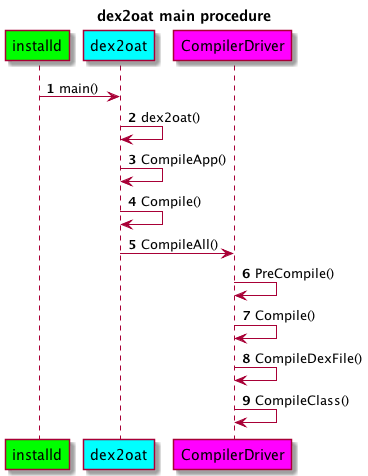
dex2oat的main函數,直接是dex2oat工廠函數的封裝。
int main(int argc, char** argv) {
int result = art::dex2oat(argc, argv);
// Everything was done, do an explicit exit here to avoid running Runtime destructors that take
// time (bug 10645725) unless we're a debug build or running on valgrind. Note: The Dex2Oat class
// should not destruct the runtime in this case.
if (!art::kIsDebugBuild && (RUNNING_ON_VALGRIND == 0)) {
exit(result);
}
return result;
}
我們先看一下流程圖,然後對照到代碼看。
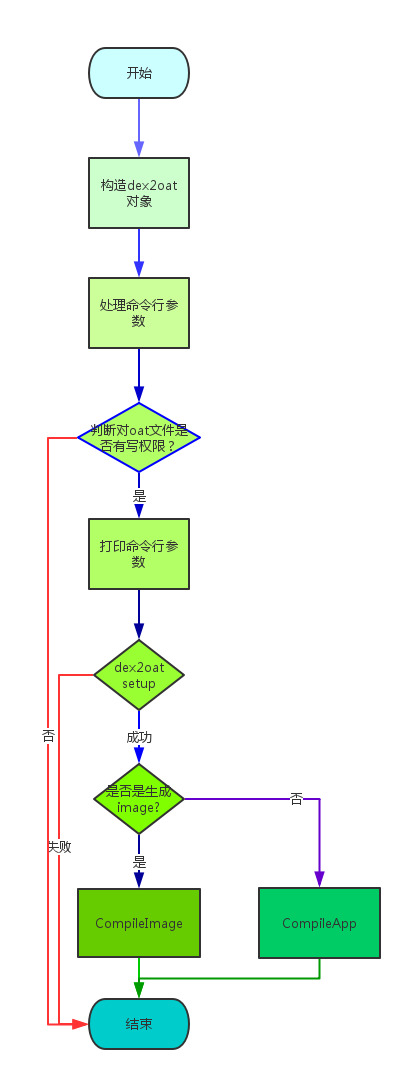
dex2oat的整個邏輯是很清晰的:
首先是不得不做一個arm上的wZ喎?/kf/ware/vc/" target="_blank" class="keylink">vcmthcm91bmSjrNXiuPbT687Sw8e31s72tcTW98/f1N3Ksc7eudijrMHLveLSu8/Cvs2/ydLUwcuhozxiciAvPg0KyLu688v51/a1xMrCx+mjujxiciAvPg0KMS4gubnU7ERleDJvYXS21M/zPGJyIC8+DQoyLiC0psDtw/zB7tDQss7K/TxiciAvPg0KMy4gz8jQ0MXQts+21NPazsS8/srHt/HT0NC0tcTIqM/ePGJyIC8+DQo0LiC08tOhw/zB7tDQss7K/TxiciAvPg0KNS4gxdC2z2RleDJvYXS1xHNldHVwyse38c3qs8k8YnIgLz4NCjYuILj5vt3Kx7fxaW1hZ2W31rHwtffTw0NvbXBpbGVJbWFnZbvyQ29tcGlsZUFwcLXEtKbA7TwvcD4NCjxwPrT6wuvA78Pm16LKzbrcz+rPuKOsv8m2wdDUuty6w6OsztLDx7+00rvPwqO6PC9wPg0KPHByZSBjbGFzcz0="brush:java;">
static int dex2oat(int argc, char** argv) {
b13564922();
TimingLogger timings("compiler", false, false);
Dex2Oat dex2oat(&timings);
// Parse arguments. Argument mistakes will lead to exit(EXIT_FAILURE) in UsageError.
dex2oat.ParseArgs(argc, argv);
// Check early that the result of compilation can be written
if (!dex2oat.OpenFile()) {
return EXIT_FAILURE;
}
// Print the complete line when any of the following is true:
// 1) Debug build
// 2) Compiling an image
// 3) Compiling with --host
// 4) Compiling on the host (not a target build)
// Otherwise, print a stripped command line.
if (kIsDebugBuild || dex2oat.IsImage() || dex2oat.IsHost() || !kIsTargetBuild) {
LOG(INFO) << CommandLine();
} else {
LOG(INFO) << StrippedCommandLine();
}
if (!dex2oat.Setup()) {
dex2oat.EraseOatFile();
return EXIT_FAILURE;
}
if (dex2oat.IsImage()) {
return CompileImage(dex2oat);
} else {
return CompileApp(dex2oat);
}
}
} // namespace art
處理命令行參數等細節我們後面再補,我們先躍進到核心邏輯CompileApp中。
我們可以看到,基本上還是對於dex2oat.Compile的封裝,後面都是對寫文件和計時的處理。
static int CompileApp(Dex2Oat& dex2oat) {
dex2oat.Compile();
// Create the app oat.
if (!dex2oat.CreateOatFile()) {
dex2oat.EraseOatFile();
return EXIT_FAILURE;
}
// Do not close the oat file here. We might haven gotten the output file by file descriptor,
// which we would lose.
if (!dex2oat.FlushOatFile()) {
return EXIT_FAILURE;
}
// When given --host, finish early without stripping.
if (dex2oat.IsHost()) {
if (!dex2oat.FlushCloseOatFile()) {
return EXIT_FAILURE;
}
dex2oat.DumpTiming();
return EXIT_SUCCESS;
}
// Copy unstripped to stripped location, if necessary. This will implicitly flush & close the
// unstripped version. If this is given, we expect to be able to open writable files by name.
if (!dex2oat.CopyUnstrippedToStripped()) {
return EXIT_FAILURE;
}
// Flush and close the file.
if (!dex2oat.FlushCloseOatFile()) {
return EXIT_FAILURE;
}
dex2oat.DumpTiming();
return EXIT_SUCCESS;
}
然後我們再看一下完全是一個模子裡面出來的CompileImage.
static int CompileImage(Dex2Oat& dex2oat) {
dex2oat.Compile();
// Create the boot.oat.
if (!dex2oat.CreateOatFile()) {
dex2oat.EraseOatFile();
return EXIT_FAILURE;
}
// Flush and close the boot.oat. We always expect the output file by name, and it will be
// re-opened from the unstripped name.
if (!dex2oat.FlushCloseOatFile()) {
return EXIT_FAILURE;
}
// Creates the boot.art and patches the boot.oat.
if (!dex2oat.HandleImage()) {
return EXIT_FAILURE;
}
// When given --host, finish early without stripping.
if (dex2oat.IsHost()) {
dex2oat.DumpTiming();
return EXIT_SUCCESS;
}
// Copy unstripped to stripped location, if necessary.
if (!dex2oat.CopyUnstrippedToStripped()) {
return EXIT_FAILURE;
}
// FlushClose again, as stripping might have re-opened the oat file.
if (!dex2oat.FlushCloseOatFile()) {
return EXIT_FAILURE;
}
dex2oat.DumpTiming();
return EXIT_SUCCESS;
}
Java不同於其它很多編譯型語言的一點是在於它有ClassLoader。在做編譯之前,先要對ClassLoader進行預處理。
然後,就創建一個CompilerDriver對象,並調用driver的ComileAll來完成編譯。
// Create and invoke the compiler driver. This will compile all the dex files.
void Compile() {
TimingLogger::ScopedTiming t("dex2oat Compile", timings_);
compiler_phases_timings_.reset(new CumulativeLogger("compilation times"));
// Handle and ClassLoader creation needs to come after Runtime::Create
jobject class_loader = nullptr;
Thread* self = Thread::Current();
if (!boot_image_option_.empty()) {
ClassLinker* class_linker = Runtime::Current()->GetClassLinker();
OpenClassPathFiles(runtime_->GetClassPathString(), dex_files_, &class_path_files_);
ScopedObjectAccess soa(self);
// Classpath: first the class-path given.
std::vector class_path_files;
for (auto& class_path_file : class_path_files_) {
class_path_files.push_back(class_path_file.get());
}
// Store the classpath we have right now.
key_value_store_->Put(OatHeader::kClassPathKey,
OatFile::EncodeDexFileDependencies(class_path_files));
// Then the dex files we'll compile. Thus we'll resolve the class-path first.
class_path_files.insert(class_path_files.end(), dex_files_.begin(), dex_files_.end());
class_loader = class_linker->CreatePathClassLoader(self, class_path_files);
}
driver_ = new CompilerDriver(compiler_options_.get(),
verification_results_,
&method_inliner_map_,
compiler_kind_,
instruction_set_,
instruction_set_features_.get(),
image_,
image_classes_.release(),
compiled_classes_.release(),
nullptr,
thread_count_,
dump_stats_,
dump_passes_,
dump_cfg_file_name_,
compiler_phases_timings_.get(),
swap_fd_,
profile_file_);
driver_->CompileAll(class_loader, dex_files_, timings_);
}
核心邏輯還是compiler_的初始化。
看到構造需要這麼多參數,我們需要對於dex2oat的命令行參數進行一個復習了,我們在前面的《細說dex2oat(1)》中曾經有過對於所有參數的介紹。
CompilerDriver::CompilerDriver(const CompilerOptions* compiler_options,
VerificationResults* verification_results,
DexFileToMethodInlinerMap* method_inliner_map,
Compiler::Kind compiler_kind,
InstructionSet instruction_set,
const InstructionSetFeatures* instruction_set_features,
bool image, std::unordered_set* image_classes,
std::unordered_set* compiled_classes,
std::unordered_set* compiled_methods,
size_t thread_count, bool dump_stats, bool dump_passes,
const std::string& dump_cfg_file_name, CumulativeLogger* timer,
int swap_fd, const std::string& profile_file)
: swap_space_(swap_fd == -1 ? nullptr : new SwapSpace(swap_fd, 10 * MB)),
swap_space_allocator_(new SwapAllocator(swap_space_.get())),
profile_present_(false), compiler_options_(compiler_options),
verification_results_(verification_results),
method_inliner_map_(method_inliner_map),
compiler_(Compiler::Create(this, compiler_kind)),
compiler_kind_(compiler_kind),
instruction_set_(instruction_set),
instruction_set_features_(instruction_set_features),
freezing_constructor_lock_("freezing constructor lock"),
compiled_classes_lock_("compiled classes lock"),
compiled_methods_lock_("compiled method lock"),
compiled_methods_(MethodTable::key_compare()),
non_relative_linker_patch_count_(0u),
image_(image),
image_classes_(image_classes),
classes_to_compile_(compiled_classes),
methods_to_compile_(compiled_methods),
had_hard_verifier_failure_(false),
thread_count_(thread_count),
stats_(new AOTCompilationStats),
dedupe_enabled_(true),
dump_stats_(dump_stats),
dump_passes_(dump_passes),
dump_cfg_file_name_(dump_cfg_file_name),
timings_logger_(timer),
compiler_context_(nullptr),
support_boot_image_fixup_(instruction_set != kMips && instruction_set != kMips64),
dedupe_code_("dedupe code", *swap_space_allocator_),
dedupe_src_mapping_table_("dedupe source mapping table", *swap_space_allocator_),
dedupe_mapping_table_("dedupe mapping table", *swap_space_allocator_),
dedupe_vmap_table_("dedupe vmap table", *swap_space_allocator_),
dedupe_gc_map_("dedupe gc map", *swap_space_allocator_),
dedupe_cfi_info_("dedupe cfi info", *swap_space_allocator_) {
DCHECK(compiler_options_ != nullptr);
DCHECK(verification_results_ != nullptr);
DCHECK(method_inliner_map_ != nullptr);
dex_to_dex_compiler_ = reinterpret_cast(ArtCompileDEX);
compiler_->Init();
CHECK_EQ(image_, image_classes_.get() != nullptr);
...
}
首先,CompilerDriver展現了一個值得我們學習的好習慣,為編譯線程構造了一個線程池。
在CompilerDriver進行編譯的時候,分成了兩個步驟:
* PreCompile
* Compile
void CompilerDriver::CompileAll(jobject class_loader,
const std::vector& dex_files,
TimingLogger* timings) {
DCHECK(!Runtime::Current()->IsStarted());
std::unique_ptr thread_pool(
new ThreadPool("Compiler driver thread pool", thread_count_ - 1));
...
PreCompile(class_loader, dex_files, thread_pool.get(), timings);
Compile(class_loader, dex_files, thread_pool.get(), timings);
...
}
PreCompile的步驟主要就是兩個:
* 做校驗
* 做類的初始化
我們將前面判斷是否要做校驗的部分先略過,這個PreCompile的邏輯看起來就清晰得多。
void CompilerDriver::PreCompile(jobject class_loader, const std::vector& dex_files, ThreadPool* thread_pool, TimingLogger* timings) { ... Verify(class_loader, dex_files, thread_pool, timings); ... if (had_hard_verifier_failure_ && GetCompilerOptions().AbortOnHardVerifierFailure()) { LOG(FATAL) << "Had a hard failure verifying all classes, and was asked to abort in such " << "situations. Please check the log."; } InitializeClasses(class_loader, dex_files, thread_pool, timings); ... }
針對每一個dex,調用CompileDexFile去編譯。
void CompilerDriver::Compile(jobject class_loader, const std::vector& dex_files, ThreadPool* thread_pool, TimingLogger* timings) { for (size_t i = 0; i != dex_files.size(); ++i) { const DexFile* dex_file = dex_files[i]; CHECK(dex_file != nullptr); CompileDexFile(class_loader, *dex_file, dex_files, thread_pool, timings); } ... }
上面的Compile函數是將多個dex拆成每一個dex文件的料度,而CompileDexFile再將其拆成每個類的粒度,針對每個類再調用CompileClass來進行編譯。
void CompilerDriver::CompileDexFile(jobject class_loader, const DexFile& dex_file,
const std::vector& dex_files,
ThreadPool* thread_pool, TimingLogger* timings) {
TimingLogger::ScopedTiming t("Compile Dex File", timings);
ParallelCompilationManager context(Runtime::Current()->GetClassLinker(), class_loader, this,
&dex_file, dex_files, thread_pool);
context.ForAll(0, dex_file.NumClassDefs(), CompilerDriver::CompileClass, thread_count_);
}
最後,我們再次復習一下到目前為止學習的過程:
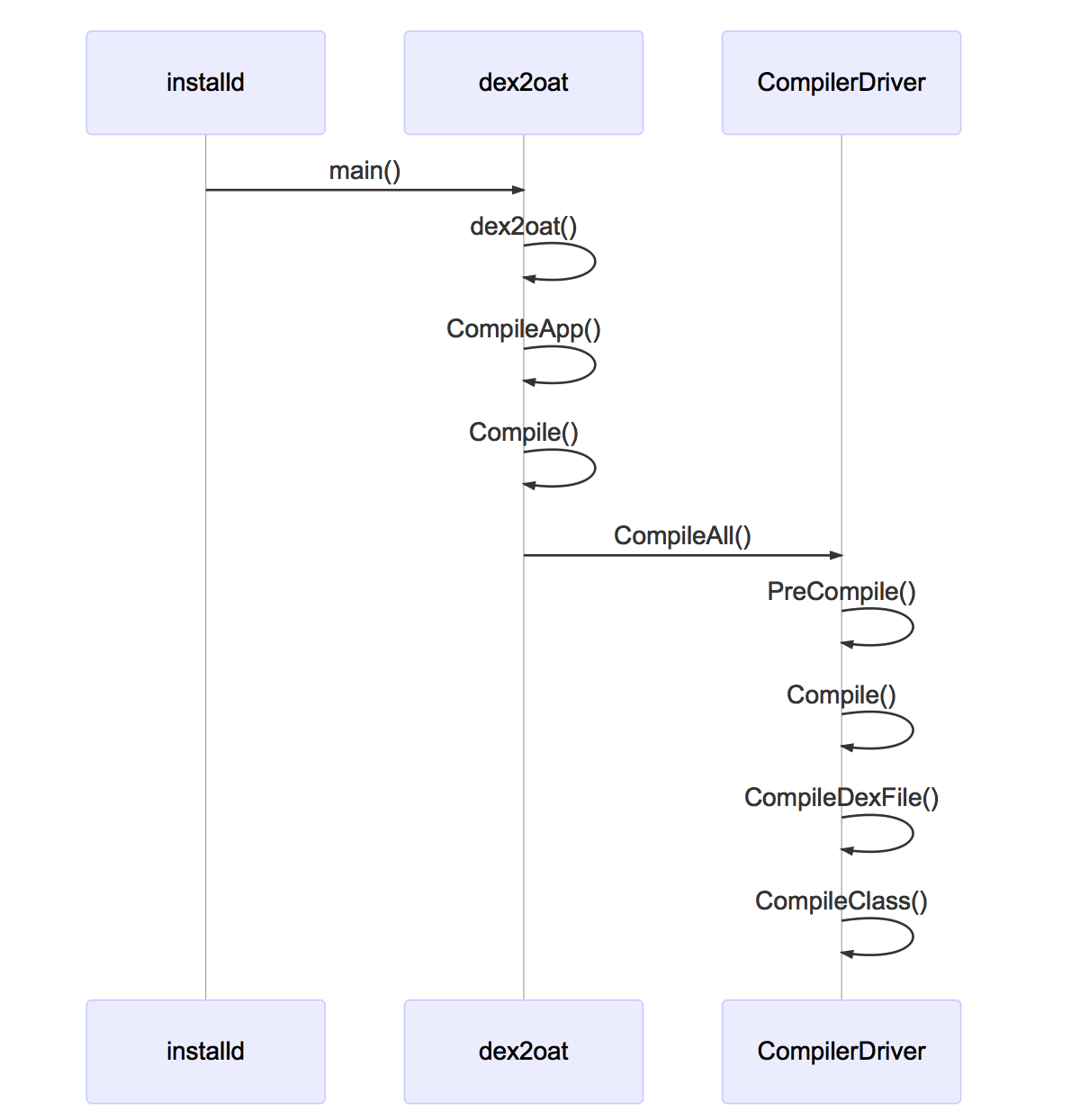
 Android的AdapterViewFlipper和Stackview-android學習之旅(三十)
Android的AdapterViewFlipper和Stackview-android學習之旅(三十)
AdapterViewFlipper簡介AdapterViewFlipper繼承了AdapterViewAnimater。每次只能顯示一個組件,用showPrevious
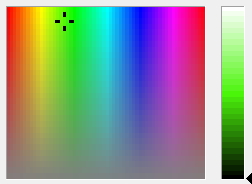 Android中顏色選擇器和改變字體顏色的實例教程
Android中顏色選擇器和改變字體顏色的實例教程
1.構建一張七彩圖:我們經常看到這種樣子的顏色選擇器吧..然後其實右邊的亮度選擇是:這樣我們的代碼就可以進行啦... // 創建七彩圖片 private voi
 Android實現ListView左右滑動刪除和編輯
Android實現ListView左右滑動刪除和編輯
有時候,為了實現項目中的需求,完成設計好的用戶交互體驗,不的不把這些View重新改造成自己想要的效果。Android原生的ListView是不支持左右滑動的,但是看到微信
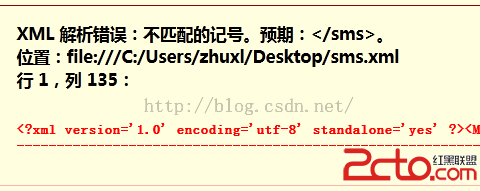 Android 存儲學習之保存系統短信到SD卡(使用XML序列化器)
Android 存儲學習之保存系統短信到SD卡(使用XML序列化器)
上節中我們是手動拼接xml文件,但是上節中那樣的做法會有一個問題,比如: //插入消息的內容sBuffer.append(); sBuffer.append(s